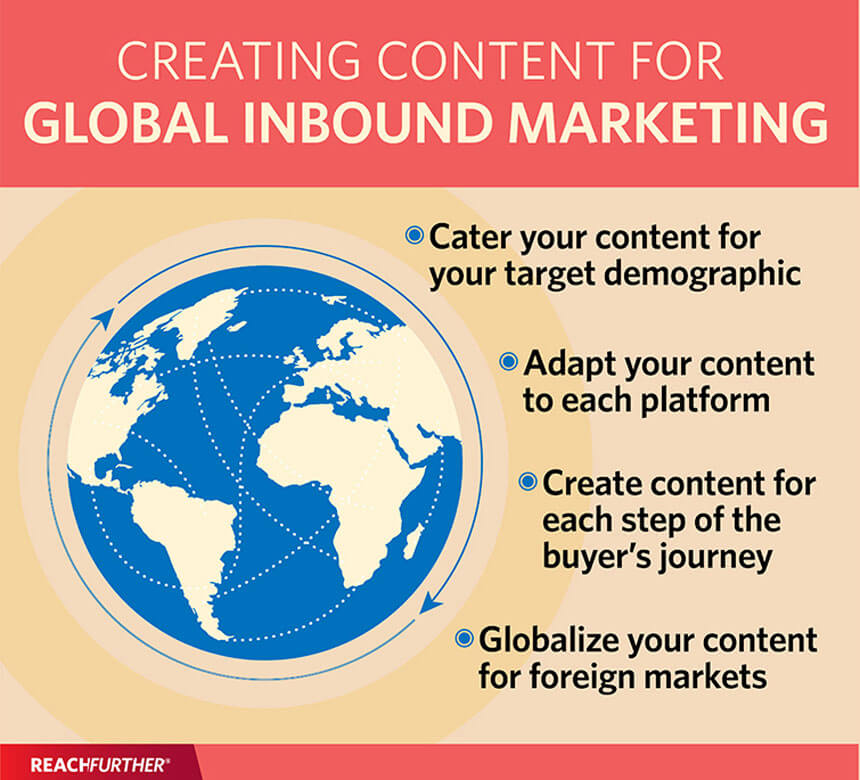U.S.-Asia Business
How to Drive Sales Using Inbound and Global Marketing
By

Creating the right content can provide qualified leads and drive sales for your business.
Historically, most businesses have relied on more traditional forms of marketing like print and television advertising to get word out about their brand or products. However, buyers’ behaviors are continuously changing, which means that these traditional forms of marketing aren’t as impactful as they used to be—that’s where inbound marketing comes into play.
The key difference between inbound marketing and outbound marketing is that inbound marketing drives connections by looking to solve the consumer’s existing problems. Especially in the midst of COVID-19, inbound marketing allows businesses to adapt to the “ever-evolving consumer behavior” by focusing on “attracting customers through relevant and helpful content,” says Trygve Olsen, a director at growth marketing agency BizzyWeb, in a recent webinar.
“So, with inbound marketing, potential customers are now going to find you through channels like blogs, search engines, social media and referrals,” he adds.
Whether you’re leveraging content or optimizing your website SEO, businesses need to incorporate inbound marketing into their business strategy to survive and thrive.
Be helpful and be human
Olsen says that the two key things to remember when using inbound marketing is to be helpful and to be human, which will drive how you approach your marketing strategies.
“Being helpful doesn't just mean you're really quick to give answers to your prospects’ problems,” he clarifies. “It also means that you're helping your prospects better understand their problems, and then giving them guidance to find their best results.”
He says that businesses should ask themselves these four questions:
- Are you creating content with your prospects in mind?
- Are you explaining things in a way that non-experts can easily understand?
- Why would these prospects find this information helpful?
- Are you giving them all the information potential customers need to make a good decision?
One of the keys to appearing more human is by making sure that your potential customers can easily and quickly communicate with you. Olsen says that businesses can utilize artificial intelligence such as chatbots to make visitors feel like they are having one-on-one conversations.
“Not only does it communicate trust and safety to your prospects…it also develops a long-term customer relationship because, as they're trying to solve the problem, they're looking to you for answers,” Olsen explains.
Understand the four stages of inbound marketing
Inbound marketing is broken down to four stages: attract, convert, close and delight.
- Attract
- Convert
- Close
- Delight
For the attract step, Olsen says that it’s important to remember that you’re trying to get qualified leads to discover your website, business or product.
“You’re not just trying to get more visitors…[you want] the people who are going to be interested in having the solution that you offer,” he says. “And that you do that through great blogging, you do that through targeted advertising, through social publishing.”
The next step is to convert those qualified leads into actual customers, and Olsen suggests that you do that by gathering their information through a chatbot, digital form, or something similar. Once you have that information, it opens up the relationship.
“Then you can start answering questions, providing relevant content that's interesting and valuable to them,” he says.
Olsen also adds that it’s imperative for businesses to keep track of their leads: “Contact information is currency when it comes to marketing. Keeping track of the leads you're converting in a centralized database, like a CRM (customer relationship management system), is absolutely crucial to making this work.”
“The close stage incorporates all tactics required turning a lead into a customer, so that's all you're selling, all your qualifying, all of your conversations,” says Olsen. “All of that is just as important as the attract and convert stage, but now it's really where the rubber hits the road…Now you're doing the third part of the selling, which is selling them on the idea that you are the right fit for them.”
However, the marketing doesn’t stop once the sale is made. Businesses should continue to engage their customers after, so they can turn them into “promoters of your products and services.”
“When we talk about delight, we're trying to hear about how all tactics are required to retain a customer and then turn them into a promoter, so that anytime they go on social media at night, [or watch] TV, and they see somebody ask the question that you (the business) are the answer to, you want them to provide that answer,” says Olsen.
Create the right content
According to Olsen, inbound marketing can’t exist without content—which means, content marketing is an integral part of any business’s strategy. But how do you know what kind of content to create?

The first step is to know what target demographic you’re creating your content for by developing a detailed buyer persona through research. Then, Olsen says you need to determine what specific goals you want to achieve with your content: Do you want to gain more subscribers? Do you want to have more people sign up for a service? Do you want to increase traffic to your website?
“In order to get found by the right customers, you have to create educational content,” advises Olsen. That is the best way to create trust between your business and the consumer.
Businesses should create content that addresses each step of the buyer’s journey, which is the process a consumer goes through before making a purchasing decision. That buyer’s journey will vary industry to industry, but businesses should create content that address the questions their buyer personas have at each stage of the journey.
Generally, the easiest way to start your content creation is by creating a blog. “It really is news—it's thought leadership, it's creating ways in which you are demonstrating that you are a good and viable solution to what your prospects are needing,” he says. However, businesses should create content for the platforms that your buyer personas are spending the most time on, and each platform prefers certain types of content.
When creating content, Olsen says businesses need to keep search engine optimization (SEO) top of mind. SEO is the key to making sure your content shows up under the right search terms and is one of the top ways to filter for qualified leads.
Globalize your content
Whether you’re looking to expand overseas or trying to reach a new demographic domestically, it’s a good idea to translate your website and content into at least one other language, says Wendy Pease, a partner at translation services company Rapport International. According to Pease, 90% of people search for content in their native language and almost 50% of people will not make a purchase if it isn’t presented in their native language.

“In the United States, it used to be the melting pot, and I've heard it now called the mix salad because people who are coming into the United States are keeping their language and their culture,” says Pease. “Are you missing some of those conversions or buyers…just here in the United States because they speak Spanish?”
However, Pease cautions against relying on Google Translate. Just because something is a literal translation, doesn’t mean it translates culturally. A number of giant corporations across the world have made embarrassing and hilarious blunders when trying to translate slogans for foreign markets. Instead, Pease suggests businesses should focus on localization.
“If you want to sell to consumers, you have to make real cultural references,” Pease says. “I'm sure anybody in Chicago is not going to buy Boston Red Sox stuff—you know they'd want to have White Sox stuff.” Additionally, businesses should research what people are searching in other languages and optimize their SEO for those terms.
With that in mind, businesses don’t have to translate everything; they can choose to translate key parts of their website or content, depending on what queries they are getting from customers and leads.
“If you have five main questions that you're getting, why not put a landing page on there to answer your questions?” she uses as an example.
Subscribe to the Reach Further Newsletter
Get inspiring stories in your inbox every month.

